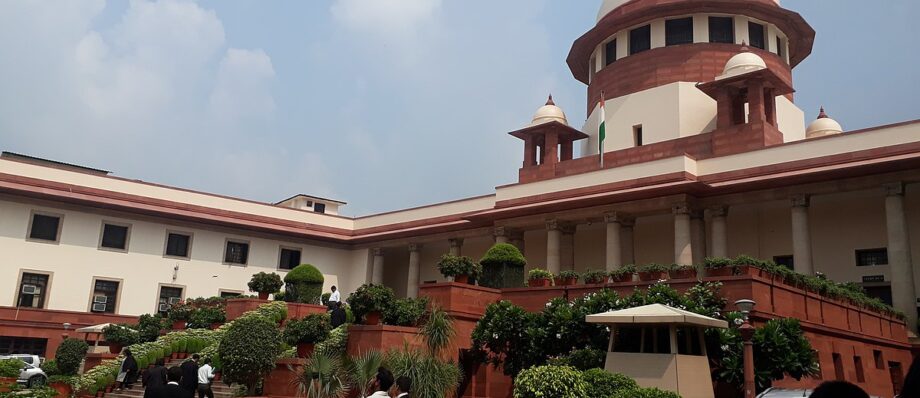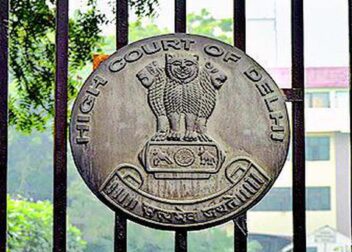New Delhi — In a landmark decision, the Supreme Court of India has ruled that private properties cannot be considered “material resources of the community” under Article 39B of the Indian Constitution. As a result, such properties cannot be seized by the state in the interests of the “common good,” challenging an interpretation that had been in place for decades. The verdict is seen as a significant reinforcement of individual property rights and economic freedoms in India.
This judgment was delivered by a nine-judge bench of the Supreme Court, which had been hearing a long-pending case involving the Maharashtra Housing and Area Development Act, 1986. The case has its roots in an amendment to the Act that allowed the state to acquire private properties, including rundown buildings, for public purposes, particularly restoration or preservation. The amendments were based on the interpretation of Article 39B, which directs the state to ensure that the ownership and control of material resources be distributed in a way that subserves the common good.
The Debate Over Material Resources
Article 39B, part of the Directive Principles of State Policy, directs the state to make policies that “secure the ownership and control of the material resources of the community” in a way that promotes social and economic justice. However, the term *material resources* has long been a subject of legal debate, particularly regarding whether it includes private properties or only public resources.
The case before the Supreme Court was rooted in this very question. In earlier rulings, such as the 1977 case *State of Karnataka vs. Shri Rangan Natar Reddi*, the Supreme Court had attempted to define the scope of *material resources*. Justice Krishna Ayer, in his minority opinion in that case, had argued that “everything of value or use in the material world” could be considered a material resource, and thus private properties could fall under this category. This interpretation was upheld by a five-judge bench in the 1982 case *Sanjay Coke Manufacturing Co. vs. Bharat Coking Coal Ltd.*
However, the majority view in those cases had limited the scope of *material resources*, stating that not all private properties could be considered as such under Article 39B, aligning more closely with a capitalist economic framework rather than a socialist one. In contrast, Justice Ayer’s broader interpretation had been influenced by the economic and socialist ideals that shaped the Constitution’s early years.
Supreme Court’s Verdict: Upholding Individual Property Rights
In its ruling this week, the nine-judge bench led by Chief Justice DY Chandrachud reinforced the individual right to property, ruling that private properties could not be classified as material resources of the community that could be taken over by the state. The court’s judgment specifically criticized the earlier, broader interpretations of the term *material resources*, noting that such a reading conflicted with the individual right to own and control private property.
The ruling represents a sharp shift away from earlier socialist-inspired interpretations of Article 39B, which had allowed the state to seize private property in the name of redistribution for the common good. This decision reflects a broader trend toward protecting property rights and individual freedoms within the framework of the Constitution.
Dissenting Opinions: A Continuing Debate
The verdict was not unanimous. Justice BV Nagaratna, while agreeing with most aspects of the ruling, disagreed with the majority’s interpretation of Article 39B, arguing that the state should have the right to determine what constitutes material resources based on the needs of the community. Justice Himansu Dulia also dissented, emphasizing that the broad and inclusive interpretation of *material resources* as initially proposed by Justice Ayer still holds relevance, particularly in a country like India, where inequality and economic disparities remain significant.
Justice Nagaratna specifically pointed out that the socialist vision of the Constitution, which envisaged a fundamental role for the state in ensuring economic justice, remains an important guiding principle. She argued that restricting the state’s power to redistribute material resources could undermine efforts to reduce economic inequality.
Justice Dulia, in his dissent, criticized the majority for overlooking the continuing relevance of the broader interpretation, particularly in terms of how it supports the constitutional vision of economic justice and equitable distribution of resources. Both dissenting judges suggested that this matter should be left for the legislature to decide, as it involves complex issues of economic policy that cannot be fully addressed by the judiciary.
The Maharashtra Housing Act and the Future of State Acquisitions
The judgment also dealt with the specific case brought by property owners challenging the Maharashtra Housing and Area Development Act, which allowed the state to acquire properties for public purposes, including preservation and restoration. The petitioners argued that the law violated their right to equality and ownership under the Constitution.
The Supreme Court, while ruling on the broader issue of private property and material resources, referred the specific matter of the Maharashtra Housing Act back to the Chief Justice for further consideration. The case is expected to be heard by a smaller bench, which will apply the principles established in this verdict to determine whether the law violates constitutional provisions regarding property rights.
A Setback for State Power, a Win for Property Owners
The Supreme Court’s ruling in this case marks a significant moment in the ongoing debate over property rights and the role of the state in economic redistribution. By rejecting the broad interpretation of *material resources* that would have allowed the state to seize private property for the common good, the Court has reinforced the protection of individual property rights in India.
However, the dissenting opinions and the referral of specific issues to a smaller bench indicate that this debate is far from settled. The case highlights the tension between individual rights and the state’s power to intervene in economic affairs for the common good—an issue that continues to shape India’s constitutional and legal landscape.
As the legal community awaits further developments, the ruling will undoubtedly have profound implications for future cases involving property rights and state power in India.



